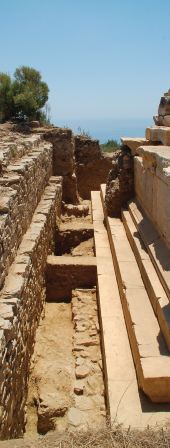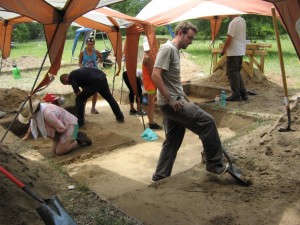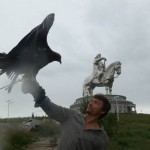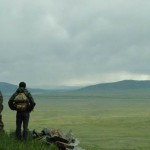Archives For November 30, 1999
After a few weeks at Hampton Plantation, the team turns to possibly exploring the Revolutionary War siege of Charleston.
For those interested in getting some archaeological experience and being a member of the research team at Dixie Plantation, Dr. Maureen Hays will be offering ANTH493 Field School in Archaeology (4 credits) in Maymester this year (May 16th to May 31st).
This course fulfills the Anthropology major Research Methods requirement and the Capstone requirement for the Archaeology major/minor.
ANTH202 is the prerequisite (or permission of Instructor). If you have taken ANTH202 students will be able to sign up for the course when summer registration opens. If students have not taken ANTH202 but really want to learn something about archaeology, send Dr. Hays an email requesting permission.
The property is owned by the College of Charleston Foundation and located in Hollywood, SC (about 40 minutes from downtown Charleston). Dixie Plantation has a long occupational history (both historic and prehistoric). Focus this summer will be on the early colonial occupation of the site (1700-1750).
The project is co-directed by Dr. Maureen Hays (College of Charleston) and Dr. Kim Pyszka (Auburn University at Montgomery).
For more detail, please see attached.
This summer’s field school collected data from several contexts within the Lowcountry. Investigations included soundings at Rose and Hampton Plantations, and historic properties in the urban core of Charleston. See the report from Martha Zierden at the Charleston Museum blog post for more details.
This story is reproduced from its original posting on the Dept. of Sociology and Anthropology blog .
The first two weeks of the archaeology field school were spent working at the site of the Rose Plantation, which is a part of a 600 acre property called the Dill Property on James Island owned by the Charleston Museum. We were working in an area where old maps showed structures that were probably part of this plantation. We found remains of some structures and many artifacts that seem to suggest that we found some of it.
Weeks 3-6 were spent mostly at Hampton Plantation State Historic Site north of Charleston near McClellanville, SC. The field school has worked on this site before but not in this location which was in a large field south of the main plantation house. Our most productive excavation units were located at the southern end of this field, and a considerable distance from the plantation house. These excavations were overseen by David Jones, who coordinates the archaeological program for the State Park Service to include research archaeology and protection of archaeological resources. He was assisted by Stacy Young, who is an archaeologist contracted in the past to excavate part of the old slave residential area at this plantation.
During this period students also rotated through two sites in downtown Charleston to get a feel for urban archaeology, which produces a very different set of challenges. One site was at 86 Church Street, owned by the parents of archaeologist, Martha Middleton. It ended up being a 4 1/2 foot deep single excavation unit with a lot going on in it. The second site was the historic Manigault House, owned by and located across from the Charleston Museum. Excavations were done both in the basement and under the porch.
Historic artifacts were found in all these locations, but lab analysis will be required to determine what it all means. At Hampton Plantation not enough colonoware (pottery commonly made by African slaves, and possibly also Native Americans) was found to suggest that the structure(s) we think we uncovered were those of Africans. There was also no window glass that is usually found in European-style structures. The Seewee Indians were also residents in the area during the colonial period, and our Hampton site may have something to do with them. Lab analysis and, hopefully, more field school research there in two years will be necessary to sort this out.
Students read 21 professional articles on various phases of archaeology, learned to identify about 80 kinds of historic ceramics used for dating purposes, and did additional written work in addition to learning fieldwork skills.
For photos of the 2015 Archaeology Field School, please check out the CofC Sociology and Anthropology Facebook page.
Original posting: http://today.cofc.edu/2015/05/01/discovery-of-rare-key-helps-unlock-dixie-plantations-storied-past/
Some archaeologists dig for years before unearthing a significant artifact.
But College of Charleston student Ben Widder had a bit of beginner’s luck during an archaeology dig last year at the College’s Dixie Plantation, located along the Stono River near Hollywood, S.C.
The senior anthropology major and archaeology minor was participating in his first archaeological field school when he unearthed a key dating to the early 1700s.
“I was using my trowel and I heard the clink of metal hitting metal,” recalls Widder. “I scraped around it pretty quickly when the ring of the key became exposed, and seconds later the tip of the trowel lifted the ring up, exposing the rest of the key.”
“I found a key!” Widder shouted, as his classmates and professor came running.
Maureen Hays, professor of anthropology and associate dean of the School of Humanities and Social Sciences, says the key was probably made before 1707 when a parsonage house for Saint Paul’s Church was constructed on the property. American Indian groups burned the parsonage during the Yamasee War (1715-1717).
“I believe this is a rare find,” says Hays, who is co-director of the archaeological field school along with Kim Pyszka ’92, an assistant professor of anthropology at Auburn University at Montgomery.
Occupied for thousands of years, the site of what is now Dixie Plantation is historically, archaeologically and ecologically significant. The 881-acre property was bequeathed to the College of Charleston Foundation in 1995 by the late conservationist, ornithologist, and artist John Henry Dick.
In recent years, archaeologists digging at Dixie have discovered hundreds of artifacts, including ceramic sherds, tobacco pipe stems and a Spanish coin.
Archeologists have also located the foundation of the old parsonage house. And now, thanks to Widder’s discovery, they have a key associated with the parsonage.
But finding the key was only the first step. The ferrous artifact was heavily oxidized and required months of careful restoration at the hands of archaeologists from the Charleston Museum.
Ron Anthony, one of the museum archaeologists who restored the key using electrolysis, has been teaching at the College as an adjunct professor since 1990.
“It’s a process whereby chlorides locked within the artifact are purged from the artifact via electricity or chemical means,” explains Anthony. “This is a common, safe way to conserve any metal artifact which oxidizes.”
As for Widder, he was just happy to be the one to make the discovery. “If it wasn’t me, it would have been someone else. I just happened to be assigned to that spot.”
COURSE: ANTH 493 Archaeological Field School, 8 s.h. of credit
DATES: Monday, May 18, 2015 through Thursday, June 2, 2015 (7 weeks)
TIME: 7:30 a.m. – 2:30/3:00 p.m., Monday through Friday.
PLACES: Dill Property (James Island), Manigault House (downtown), and one of the state parks (yet to be determined)
INSTRUCTORS: Dr. Barbara Borg (CofC), Ms. Martha Zierden (Charleston Museum) and Mr. Ron Anthony (Charleston Museum). Other archaeologists from the SC state parks system will also be working with us when we are working on one of their sites.
TRANSPORTATION: Students usually drive their own cars or arrange to ride with other students. If the state park we work in is farther away than CharlesTowne Landing (West Ashley) or Colonial Dorchester (Summerville) the park service will hopefully provide a van and driver. (This happened one year when we traveled to Hampton Plantation State Historic Site near McClellanville, SC). Students are expected to be on site ready to work by 7:30 a.m. (this is to avoid the heat later in the day, and you will be grateful for it).
This is an intensive, team taught field school (a 400-level course), the goal of which is to teach you all the basic skills of doing field archaeology. All special equipment will be provided, though there will be one required reference text to purchase. There is a hefty academic component to the course with articles to read and summarize (made availabale on the OAKS system), a mid-term ceramics identification exam, a synthetic hypothetical project exercise, and a final written exam. You must be able to do the homework on your own time, after the field day is over, so this means evenings and weekends. It is important to not over-schedule your life during field school. 60% of your final grade is field skills, and 40% is written work.
We dress sensibly for the temperature and the conditions, and no special clothing or shoes are required. Athletic shoes, shorts, T-shirts, and hats are usual, long pants if we are working in the woods, and a rain poncho or jacket. No sandals or flip flops are allowed for safety reasons. Students bring their own sack lunches daily. Water in coolers will be provided. No alcohol is allowed. Many students find the small rigid plastic coolers that hold food and drink (and that you can also sit on) to be very convenient, as we do not always have picnic tables. Rest rooms are “usually” within walking distance.
A field school looks wonderful on your resume, and if you hope to work in, or go to graduate school in, archaeology you will be expected to have attended at least one substantial field school. Field school teaches you how to work in a real research environment, and as a close-knit team despite occasional challenging weather extremes. Field school is a wonderful experience for most, but you have to be serious about your participation. You are graded on the skills you learn in field school, and there is little time to make up missed field days or written work. Committing to doing all the work and staying on schedule is essential for success. Those students who do this will find the field school to be a wonderful experience, we hope, and we have found this to be so over the past 20 years!
I hope this description finds some of you thinking seriously about field school. This particular field school will not be held again until Summer 2017, though there are other possibilities both on and off campus to complete a field school. Again, shoot me an e-mail if you think you might be seriously interested: Dr. Borg (borgb@cofc.edu)

2015 Field School
Field school participants will be introduced to the basics of field archaeology. They will learn proper excavation techniques, archaeological survey, principles of field conservation, record keeping, site management, and archaeological surveying. Opportunities for field trips to nearby archaeological sites, such as Selinus, Lamos, Perge, Anamur, Alanya and the Alanya Museum will be arranged.
Duration
Session I : June 15-July 14
Session II: July 15-August 14
Deadline: February 1, 2015 (Note: Preference given to those who submit their applications before November 20, 2015)
Costs
$3150 for one session, $5800 for both sessions. Price excludes tuition and fees if taken for academic credit.
Academic Credit
Academic credit is optional. Participants can earn 3 or 6 credit hours through the University of Nebraska–Lincoln.
Undergraduate- $782.75, resident or non-resident, price includes tuition and fees only.
Today during the Anthropology & Sociology Brown Bag lunch, Archaeology & Anthropology Double Major, Logan Crouse shared about his travels and work in Mongolia. He traveled there over the summer through a program organized by Western Kentucky University and the National Museum of Mongolia to study the Bronze and Iron Age societies which occupied the Altai region of western Mongolia.
Logan shared how he became one of the group’s primary surveyors and how he also was asked to hike along the ridge line of a mountain in search of rock art, among many other adventures. In addition to his archaeological work, Logan experienced the culture of that region as well: his group was invited to a Kazak wedding where he was invited to participate in a Mongolian-derived tradition of wrestling.















